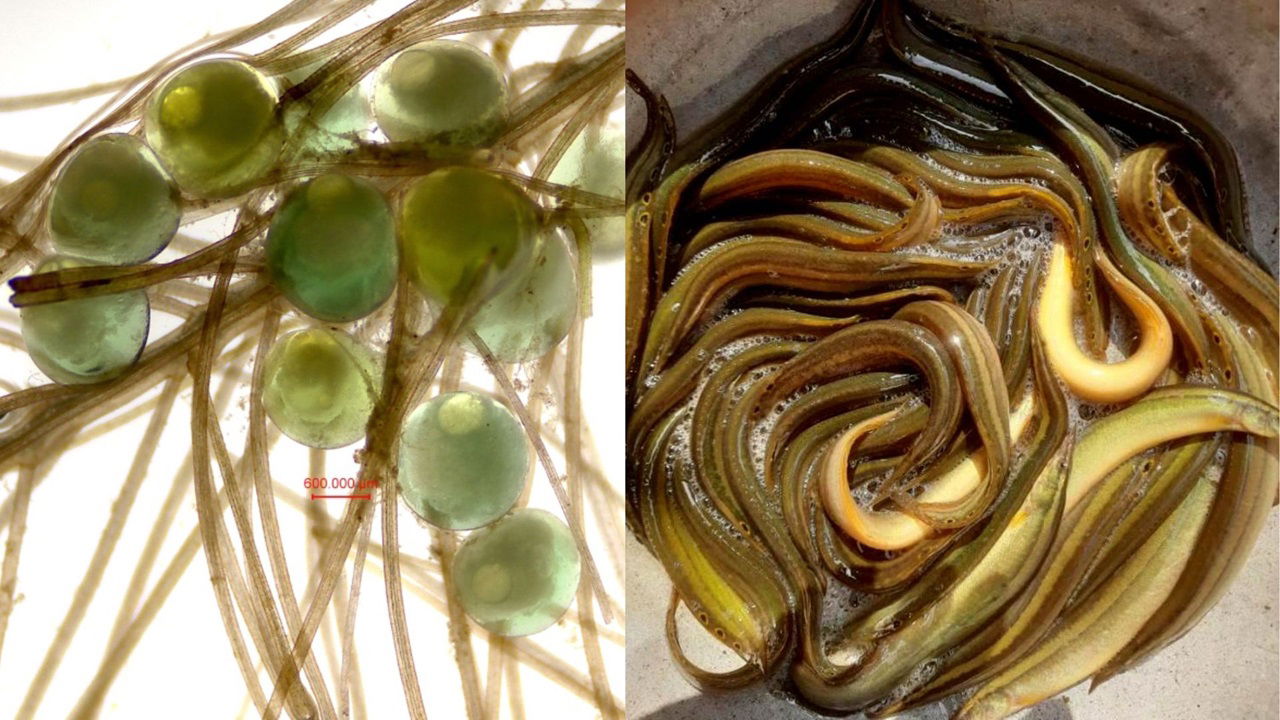
The ICAR-Central Institute of Fisheries Education (CIFE), Mumbai, has achieved a significant breakthrough by developing a comprehensive package for the captive seed production of the Peacock eel (Macrognathus aral). This innovative technology includes captive broodstock development, induced breeding, and larval rearing, offering a promising future for the aquaculture of this commercially important fish species.
The Peacock eel, a member of the Mastacembelidae family, holds considerable commercial value, especially in North-East India, Bihar, and Jharkhand. Known for its high nutritional value and consumer demand, this species commands a premium price in the market, ranging from Rs. 500-600 per kilogram. Beyond its value as a food fish, the Peacock eel is also prized in the ornamental fish trade, thanks to its vibrant color patterns, unique body shape, and playful behavior.
In captivity, the Peacock eel reaches sexual maturity at a size of 18-25 grams, typically after one year of rearing. By mid-June 2024, the CIFE team observed mature oozing males and gravid females, signaling the readiness for induced breeding. During the first week of July 2024, female fish with an average body weight of 22 grams and a mean oocyte diameter of 1.45 mm, along with oozing males weighing around 14 grams, were selected. The selected fish, in a sex ratio of 2:1 (male to female), were administered an inducing hormone comprising LHRHa and domperidone. The females received a dose of 200 µl, while the males were given half that amount.
Following an average latency period of 18 hours, spawning occurred, with a female's functional fecundity estimated at around 3,500 eggs. The fertilized eggs, characterized by their greenish color, spherical shape, and adhesive nature, were deposited on the roots of the Pistia plant, serving as a substrate. The fertilization and hatching rates were recorded at 45% and 20%, respectively.
Larval hatching took place after an 18-hour incubation period at a water temperature of 28°C. The newly hatched larvae, measuring 1.65 to 1.85 mm, featured large oval-shaped yolk sacs. Nursery rearing involved transferring the larvae to outdoor tanks with floating aquatic plants as hideouts. Exogenous feeding began five days post-hatching with Artemia nauplii and continued for 30 days. At 30 days post-hatching, weaning onto a micro-particulate diet was initiated, with the fry being reared in outdoor tanks.
This groundbreaking technology was developed by a dedicated team of scientists, including Dr. Prem Kumar, Dr. S. Munilkumar, Dr. Rupam Sharma, and Dr. K.N. Mohanta, marking a significant advancement in the sustainable aquaculture of the Peacock eel.
















